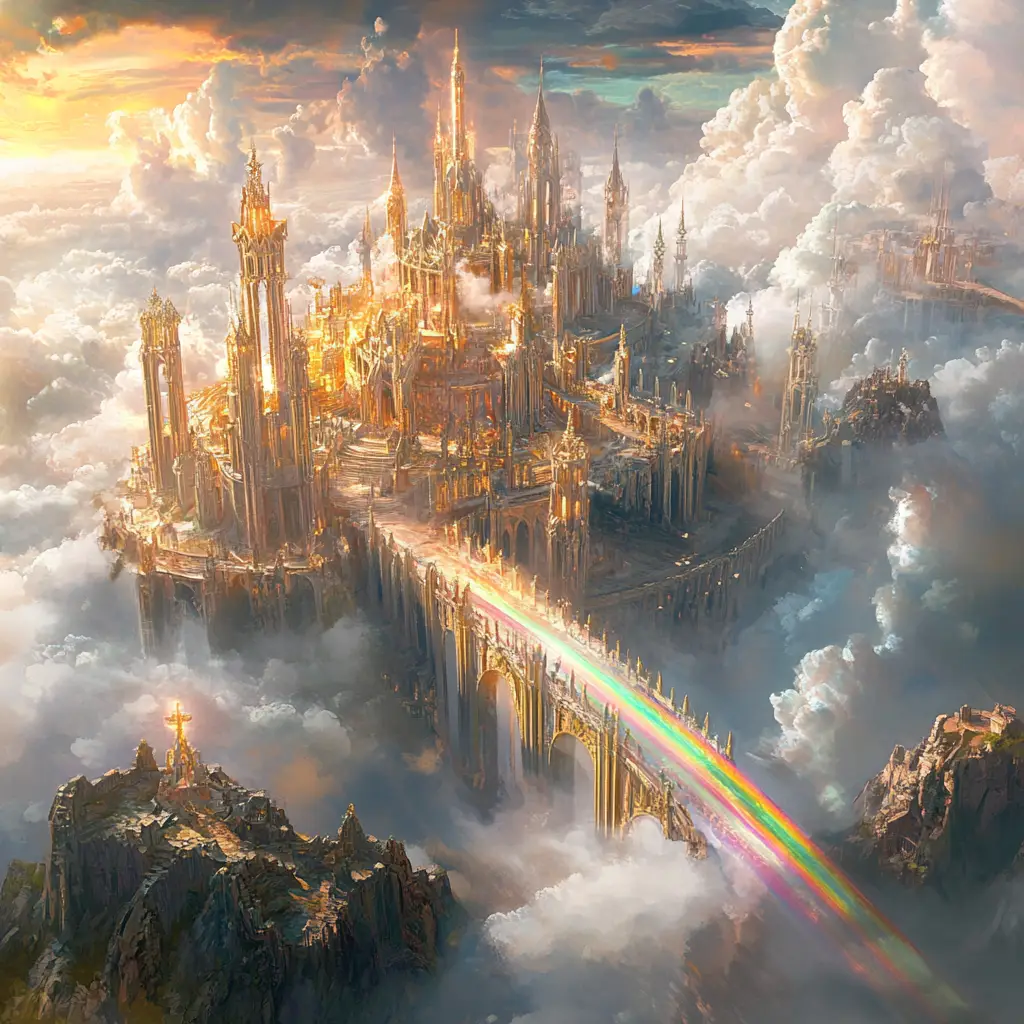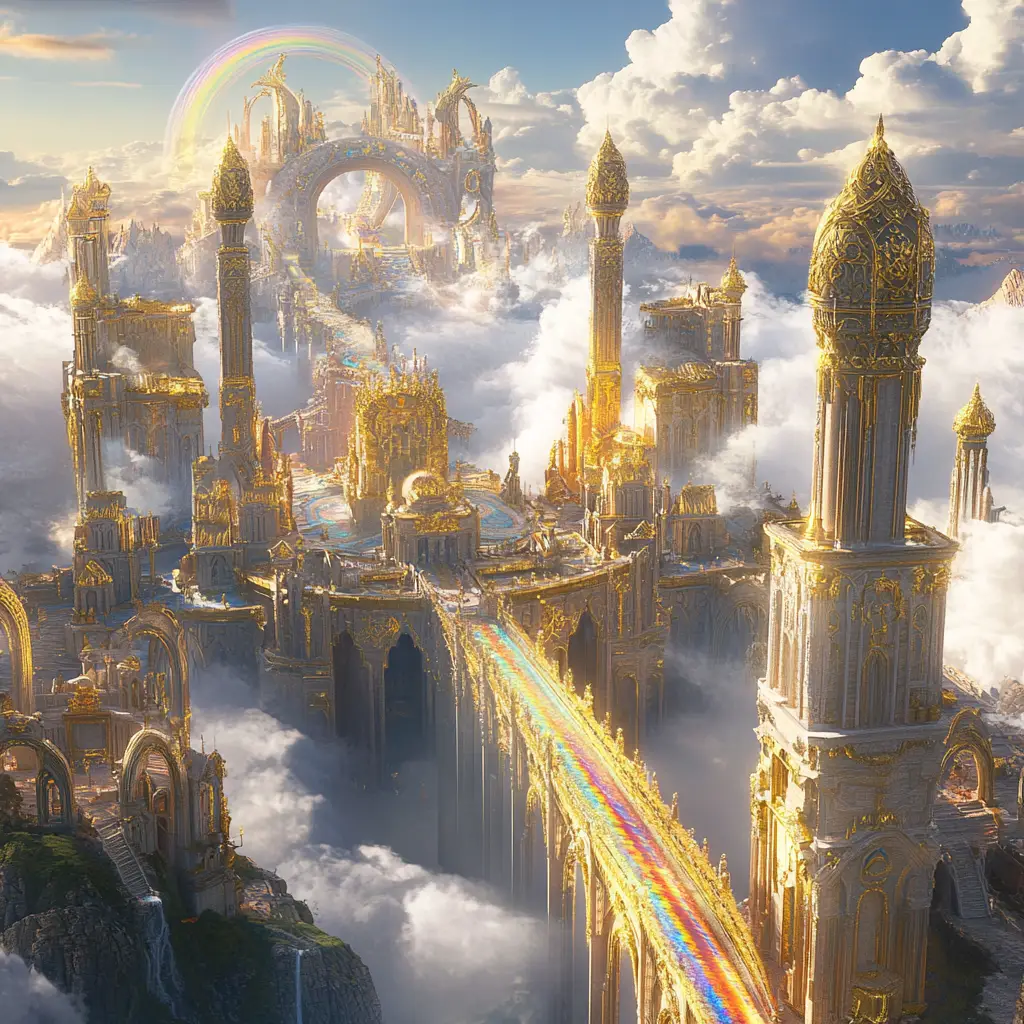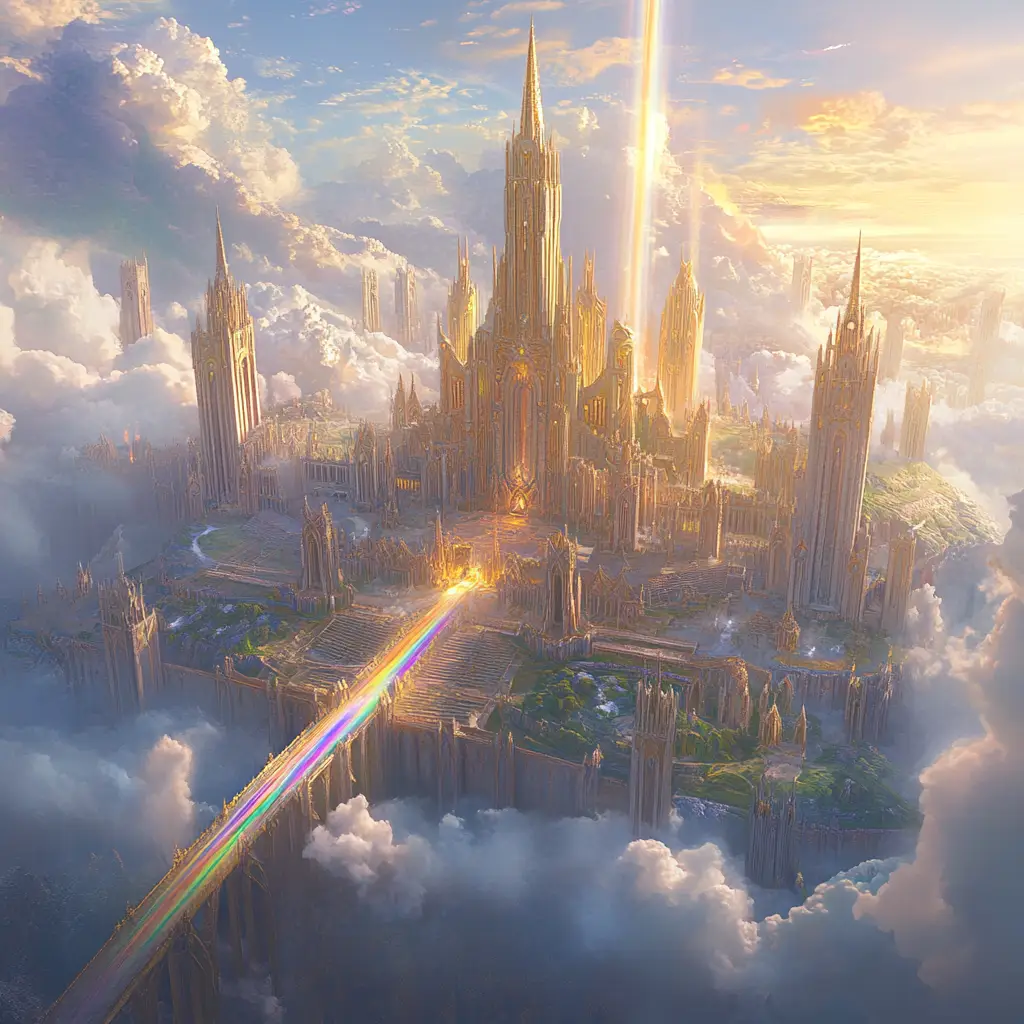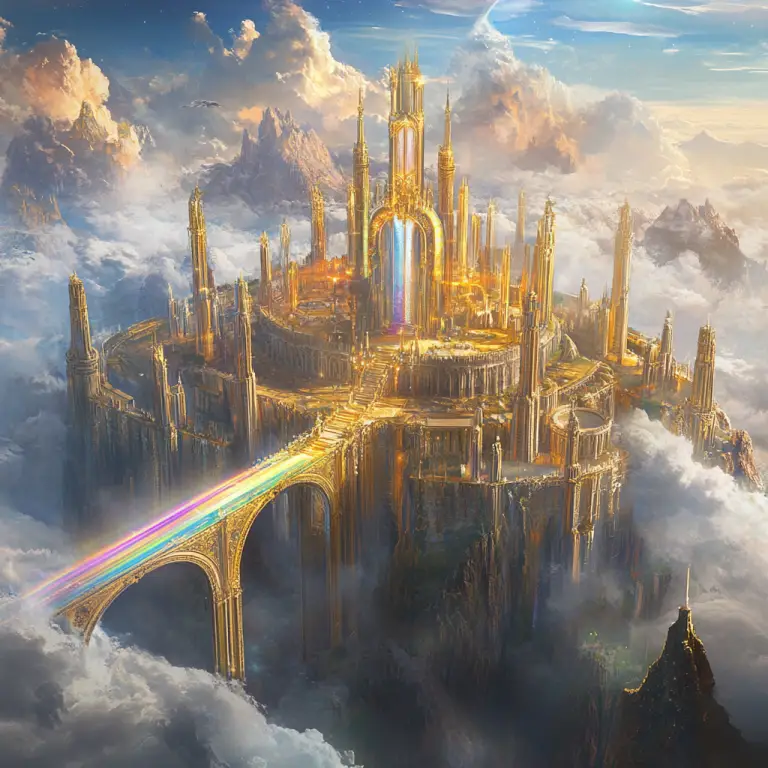Asgard is one of the most significant realms in Norse mythology, known as the home of the Æsir, the principal group of gods. It is often depicted as a majestic, fortified city in the sky, characterized by grandeur and divine power.
Home of the Æsir:
Asgard is primarily inhabited by the Æsir gods, including major figures such as Odin (the Allfather), Thor (the god of thunder), Frigg (Odin’s wife), Baldr (the god of beauty), and Tyr (the god of war).
These gods embody various aspects of life and nature, and Asgard serves as their realm of governance, wisdom, and battle.
Architecture and Features:
Asgard is often described as a grand and beautiful realm, filled with impressive structures, palaces, and halls. One of the most notable structures is Valhalla, Odin’s hall, where warriors who died gloriously in battle are taken to feast and prepare for Ragnarök, the end of the world.
The city is surrounded by a massive wall, built to protect it from the threats of giants and other foes, emphasizing its importance and security.
Bifrost:
Asgard is connected to Midgard (the realm of humans) by the Bifrost, a rainbow bridge that symbolizes the connection between gods and mortals. The Bifrost is guarded by Heimdall, the watchman of the gods, who is said to have keen senses and can see and hear everything happening across the realms.
Cultural Significance:
Asgard represents order, civilization, and divine authority in contrast to the chaotic realms of the giants and other entities. It is often seen as a place where the gods convene, make decisions, and interact with the human world.
Myths involving Asgard often reflect themes of fate, conflict, and the struggle between good and evil, illustrating the gods’ responsibilities to maintain balance in the cosmos.
Role in Norse Cosmology:
In the Norse worldview, Asgard is one of the Nine Realms and serves as a central hub for the gods. It is depicted as being located high above the earth, emphasizing its divine nature.
The realms are interconnected through Yggdrasil, the World Tree, which symbolizes the interconnectedness of all existence in Norse cosmology.
Legends and Myths:
Asgard is featured in many Norse myths, including tales of the creation of the world, the adventures of Thor, and the stories surrounding Ragnarök, where the gods face their ultimate battle against the giants and other foes.
The Aesir-Vanir War, a significant event in Norse mythology, saw the Æsir battling the Vanir gods, leading to a resolution that saw some Vanir gods residing in Asgard, thus intertwining their fates.
Symbolism
- Asgard symbolizes the divine order and the ideals of bravery, honour, and sacrifice. It embodies the aspirations of the Norse people for glory and recognition in both life and death.
- The connection between Asgard and Midgard through Bifrost highlights the relationship between gods and humans, emphasizing the gods’ role as protectors and overseers of humanity.
Conclusion
Asgard stands as a central pillar of Norse mythology, representing the divine realm where the gods reside, govern, and interact with the world. Its rich lore and the majestic imagery associated with it continue to captivate the imagination, making it a vital aspect of the Norse mythological tradition.



